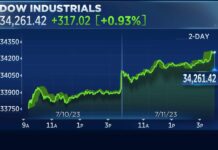In the ever-evolving landscape of e-commerce and digital transactions, the sale of precious metals, particularly silver, has witnessed a notable shift. As traditional brick-and-mortar methods are gradually complemented and even replaced by online platforms, understanding the dynamics of selling silver in the digital space becomes crucial for both buyers and sellers.
This article delves into the market trends shaping the digital silver trade, examining key factors that influence transactions, the role of online platforms, and the overall impact on the precious metals market.
1. The Rise of Online Precious Metals Trading
A. Accessibility and Convenience
The digital space has democratized access to precious metals, making silver investments more accessible to a broader audience. Online platforms offer a convenient and user-friendly interface, allowing individuals to buy and sell silverware online with ease. This increased accessibility has contributed to the growth of the digital silver market, attracting both seasoned investors and newcomers seeking to diversify their portfolios.
B. Real-Time Pricing and Information
One of the significant advantages of selling silver online is the availability of real-time pricing and comprehensive market information. Digital platforms provide users with up-to-the-minute data on silver prices, trends, and market analysis. This transparency empowers sellers to make informed decisions, aligning their strategies with the current market conditions.
2. Factors Influencing Digital Silver Transactions
A. Economic Conditions
The digital silver market is not immune to global economic conditions. Economic fluctuations, inflation concerns, and currency devaluation can significantly impact the demand for precious metals like silver. Sellers in the digital space must stay attuned to economic indicators and geopolitical events that may influence market sentiment and silver prices.
B. Technological Advancements
Advancements in technology play a pivotal role in shaping the dynamics of digital silver transactions. Blockchain technology, for instance, has been integrated into some platforms to enhance transparency and security in transactions. Understanding these technological innovations is essential for both sellers and buyers to navigate the evolving digital landscape successfully.
3. The Role of Online Platforms in Silver Trading
A. Diverse Platforms
A myriad of online platforms facilitates the buying and selling of silver, ranging from dedicated precious metals marketplaces to established e-commerce giants diversifying into this niche. Sellers must carefully choose platforms that align with their goals, considering factors such as fees, security measures, and user interface.
B. Security and Authentication
Security is a paramount concern in the digital silver trade. Reputable platforms employ robust security measures, including encryption, secure payment gateways, and two-factor authentication. Sellers should prioritize platforms that prioritize the protection of user data and financial transactions.
4. Market Trends and Consumer Behavior
A. Silver as a Safe-Haven Asset
Historically, silver has been considered a safe-haven asset, particularly during times of economic uncertainty. Digital platforms have amplified this trend by providing investors with a convenient means to allocate a portion of their portfolios to silver as a hedge against market volatility.
B. Demographic Shifts
Understanding the demographics of digital silver buyers is crucial for sellers looking to tailor their marketing strategies. The rise of younger investors in the digital space has led to a demand for educational content, transparent pricing structures, and seamless user experiences. Sellers should adapt their approaches to resonate with the preferences of this evolving demographic.
5. Challenges and Opportunities
A. Regulatory Environment
The digital silver trade operates within a regulatory framework that varies across jurisdictions. Sellers must navigate these regulations to ensure compliance and maintain the trust of their customers. Staying informed about legal requirements is vital to mitigate risks associated with regulatory changes.
B. Market Volatility
While silver is renowned for its stability, market volatility remains an inherent risk. Rapid price fluctuations can impact seller strategies and buyer confidence. Establishing risk management protocols and staying vigilant to market trends are essential to navigate the challenges posed by volatility.
6. Strategies for Success in the Digital Silver Trade
A. Building Trust
Trust is foundational in the precious metals market. Sellers should prioritize transparency in their operations, provide clear information about their silver products, and foster a reliable and secure transaction environment. Customer reviews, testimonials, and industry certifications contribute to building trust in the digital space.
B. Education and Information
Educating buyers about the nuances of the silver market is an effective strategy. Sellers can provide informative content, market insights, and guides on silver investment strategies. Empowered buyers are more likely to make informed decisions and become repeat customers.
C. Diversification of Offerings
Successful sellers in the digital silver trade often diversify their product offerings. Beyond traditional bullion, offering silver coins, bars, and collector’s items can attract a broader range of buyers with varying preferences. Diversification also hedges against market fluctuations.
Conclusion
In conclusion, the dynamics of selling silver in the digital space are shaped by a multitude of factors, ranging from technological advancements to economic conditions and changing consumer behaviors. Sellers navigating this space must adapt to evolving trends, leverage technological innovations, and prioritize transparency and security to succeed in the competitive digital silver market.
Understanding market trends, embracing opportunities, and addressing challenges will position sellers for long-term success in the ever-evolving digital precious metals trade.































































